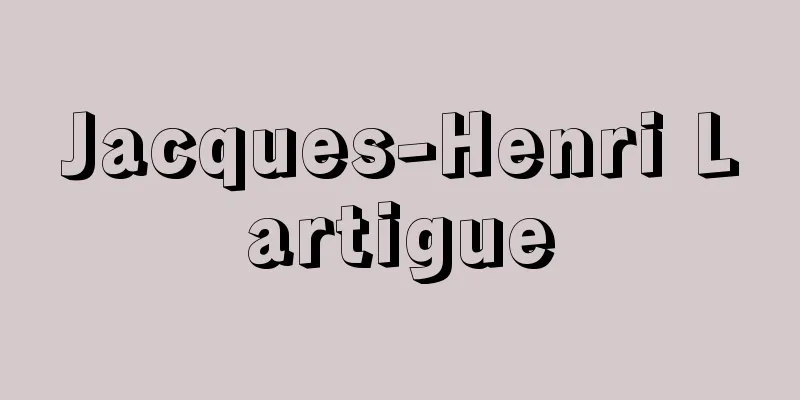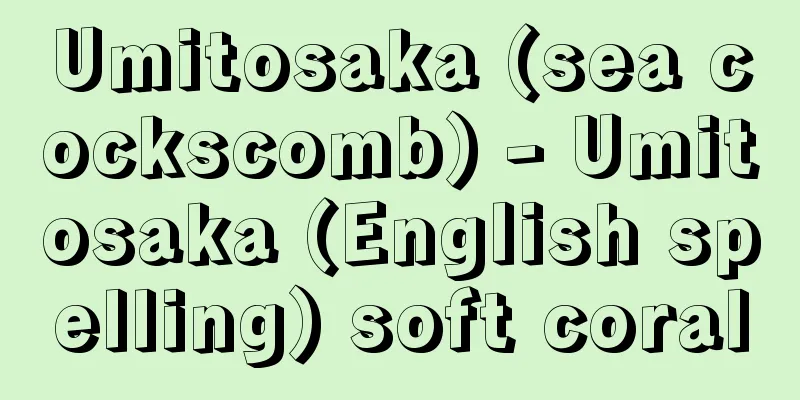Zappai - Zappai

|
Popular haikai (haikai) was practiced in the Edo period. As a practice form for full-scale haikai that is linked in an associative form, maekuzuke haikai, in which only two verses are connected, was practiced, and zappai was derived as a type of prize-winning literary art. In response to a question posed by a tenja, a kaisho (intermediary) widely solicited verses, and from the submissions collected through local intermediaries, the tenja selected the best works, printed the winning verses, and distributed them to the submitters along with prizes in a performance format (sometimes called mankuyose or mankuawase). Zappai books published by bookstores are further edited versions of these winning verse printouts. In the early days, the judges were official haiku poets, but before long, professional judges appeared, and zappai became independent as a secondary literary genre of haiku. Questions were set in a variety of formats, but they can be broadly divided into three types: the maekuzuke type, the kasazuke type, and the non-tsukeai type. [Hideyuki Iwata] Pre-phrase type"Mae-ku-tsuke" is the basic form in which linked verse (renga) originated, in which a 5-7-5 verse is added to a 7-7 verse (or vice versa). Even after the establishment of long linked verse (cho-renga), it has always been at the bottom of linked verse and haikai as the basic form of tsukeai. In zappai, it became common to set a short 7-7 verse and add a long 5-7-5 verse, and the themes gradually became simpler, until finally in senryu reviews (reviews of Karai senryu), verses that were not related to the mae-ku were composed, and so-called senryu-style kyōku (so-called senryu) solo poems were born. (Title) A prank to make a hole in the shoji screen (Fukkaku) A parent's love tells their child to crawl, stand, and run (Fukaku's review of "Chiyomigusa") [Hideyuki Iwata] With cap"Kasatsuke" is a simplified version of maekutsuke, with a 5-character title and a 7-5 syllable verse. Kyoto performers such as Unko started to perform it, and it became popular mainly in Kamigata. It is also called Kamuritsuke. (Title) I fell. (Additional verse) Please wait until the well is replaced. (Senryu review "Manku Gosurimono" 1757) [Hideyuki Iwata] Non-attached typeIt is a type of poem that does not have a sense of association, but incorporates the playful techniques used in waka and renga to create a single hokku or hiraku verse. Examples of this type include "oriku" (a poem in which a three or two character title is inserted at the beginning of a 5-7-5 or 7-7 verse. In the early days, the title had meaning, but eventually it became a meaningless three or two character title), "palindrome" (a poem that can be read the same whether it is read from top to bottom or bottom to top), "~zukushi" (a poem that inserts as many names of things as possible in one verse, such as kuni zukushi, uozukushi, and tori zukushi), "kiriku" (a poem that uses a five-character title to create a hokku), and "tenchi" (a poem that inserts a two-character kanji title at the beginning and end of a verse). In addition, 'hokku' (a verse-composed verse) was also included in the zahai performances. Although zappai is playful in nature, the content of the poems uses everyday language to express all manner of mundane aspects of human life that have not even been captured in haiku; this direction of zappai is a reflection of the original nature of haiku, and in a sense the transition from zappai to senryu and kyoku can be said to be the true path of renga and haikai. [Hideyuki Iwata] "Suzuki Katsutada, editor, Collection of Zappai, 1st period, 12 volumes (1984-87, Toyo Shoin)" ▽ "Study of Zappai History, by Miyata Masanobu (1972, Akao Shobundo)" ▽ "Senryu and Zappai, by Suzuki Katsutada (1979, Senninsha)" [Reference] |Source: Shogakukan Encyclopedia Nipponica About Encyclopedia Nipponica Information | Legend |
|
江戸時代に行われた通俗的俳諧(はいかい)。連想形式でつながっていく長編の本格的俳諧に対し、その練習形態として、2句間のみの付合(つけあい)である前句付(まえくづけ)俳諧が行われ、それから派生した一種の懸賞文芸が雑俳である。点者(てんじゃ)の出題に対して、会所(かいしょ)(仲介者)が広く句を募り、各地の取次(とりつぎ)所を通じて集められた投句(とうく)のなかから、点者が優秀作品を選び、その入選句を刷り物にして賞品とともに投句者に配るという興行形態(万句寄(まんくよせ)・万句合(まんくあわせ)などとよぶ場合もある)をとった。雑俳書として本屋が出版するものは、この勝句(かちく)刷り物をさらに編集したものである。点者は、初期においては正式な俳諧師がこれにあたったが、やがて専門点者の輩出をみ、雑俳は俳諧の第二文芸的性格を有するものとして独立する。出題には、種々の形式が行われたが、前句付(まえくづけ)型、笠付(かさづけ)型、非付合(つけあい)型の三つに大別できる。 [岩田秀行] 前句付型「前句付」は連歌(れんが)発生の基本的形態で、七・七の前句に対して、五・七・五を付けるもの(またはその逆の型)。長連歌(ちょうれんが)成立以降も、付合の基本形態として、つねに連歌・俳諧の底流に位置してきた。雑俳では、七・七の短句を出題して、五・七・五の長句を付けるのが一般的となり、さらに題がしだいに単純化されて、ついに川柳(せんりゅう)評(柄井(からい)川柳の評)においては、前句にかかわらぬ付句が詠まれることとなり、川柳風狂句(いわゆる川柳)の独詠句が生まれた。 (題) 障子に穴を明くるいたづら [岩田秀行] 笠付型「笠付」は、前句付を簡略化したもので、5文字の題に、七・五の句を付けるもの。京都の点者雲鼓(うんこ)らが興行し始め、おもに上方(かみがた)で流行した。冠付(かむりづけ)ともいう。 (題) おちにけり [岩田秀行] 非付合型付合性をもたぬもので、和歌や連歌などで行われた遊戯的手法を取り込んで、発句(ほっく)または平句(ひらく)1句を仕立てるもの。「折句(おりく)」(五・七・五または七・七の句頭に、題の3字または2字を詠み込むもの。初期には意味のある題であったが、やがて無意味な3字または2字の題となる)、「回文(かいぶん)」(上から読んでも下から読んでも同じ句をつくるもの)、「~尽(づくし)」(国尽(くにづくし)・魚尽(うおづくし)・鳥尽(とりづくし)など、1句中に物の名をできるだけたくさん詠み込むもの)、「切句(きりく)」(5文字の題によって発句を仕立てるもの)、「天地(てんち)」(句頭と句末とに、題の漢字2字の熟語を詠み込むもの)などが、この型に入る。なお、雑俳興行には「発句(ほっく)」も加えられていた。 こうした遊戯性の強い雑俳であるが、句の内容は、俳諧でも詠み残されたきわめて卑俗な人間生活万般にわたる事象を日常語を用いて表現しており、雑俳のこの方向性は、俳諧が元来もっていた性格を受けたもので、ある意味では、雑俳から川柳狂句への流れは、連歌・俳諧の本道ともいえるものである。 [岩田秀行] 『鈴木勝忠編『雑俳集成』第1期12冊(1984~87・東洋書院)』▽『宮田正信著『雑俳史の研究』(1972・赤尾照文堂)』▽『鈴木勝忠著『川柳と雑俳』(1979・千人社)』 [参照項目] |出典 小学館 日本大百科全書(ニッポニカ)日本大百科全書(ニッポニカ)について 情報 | 凡例 |
<<: History of the Satsuma Domain Navy
>>: Sappa (Japanese shad) - Sappa (English spelling)
Recommend
Atomic Energy Basic Law
The Atomic Energy Basic Act is treated as the law ...
Taylor, JE
…British high-quality newspaper. It was first pub...
Daylily (Cyperaceae) - Daylily
…A herbaceous plant of the Cyperaceae family foun...
Iwashimotsuke - Iwashimotsuke
A deciduous shrub of the Rosaceae family (APG cla...
Intraocular lenses
Also called an artificial lens, this intraocular ...
Hatsuse
A general term for the Hatsusegawa Valley in the e...
Antonio, G. (English spelling) AntonioG
...The costumes of men and women, the facial expr...
Extrapyramidal tract - Suitai-iro
In general, it is a general term for motor pathwa...
Yahiko [village] - Yahiko
A village in Nishikanbara County, central Niigata ...
Arche
In Greek philosophy, the origin or principle of al...
Blood sugar
Reference value Less than 110mg/dℓ (enzymatic met...
Belladonna lily
...A bulbous plant of the Amaryllidaceae family c...
Ministry of Labor - Labor
It is a national administrative agency establishe...
images d'Epinal (English) images dEpinal
…Inheriting the crudeness and low price of 15th-c...
Nemesios
...In the "Myth of Er" in Book 10 of th...









